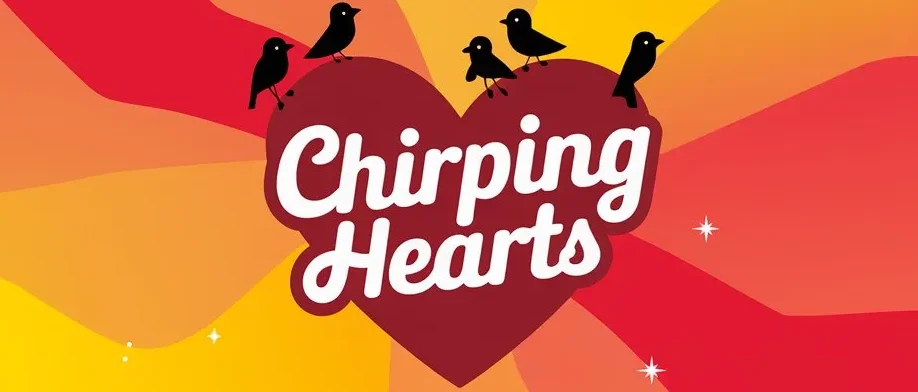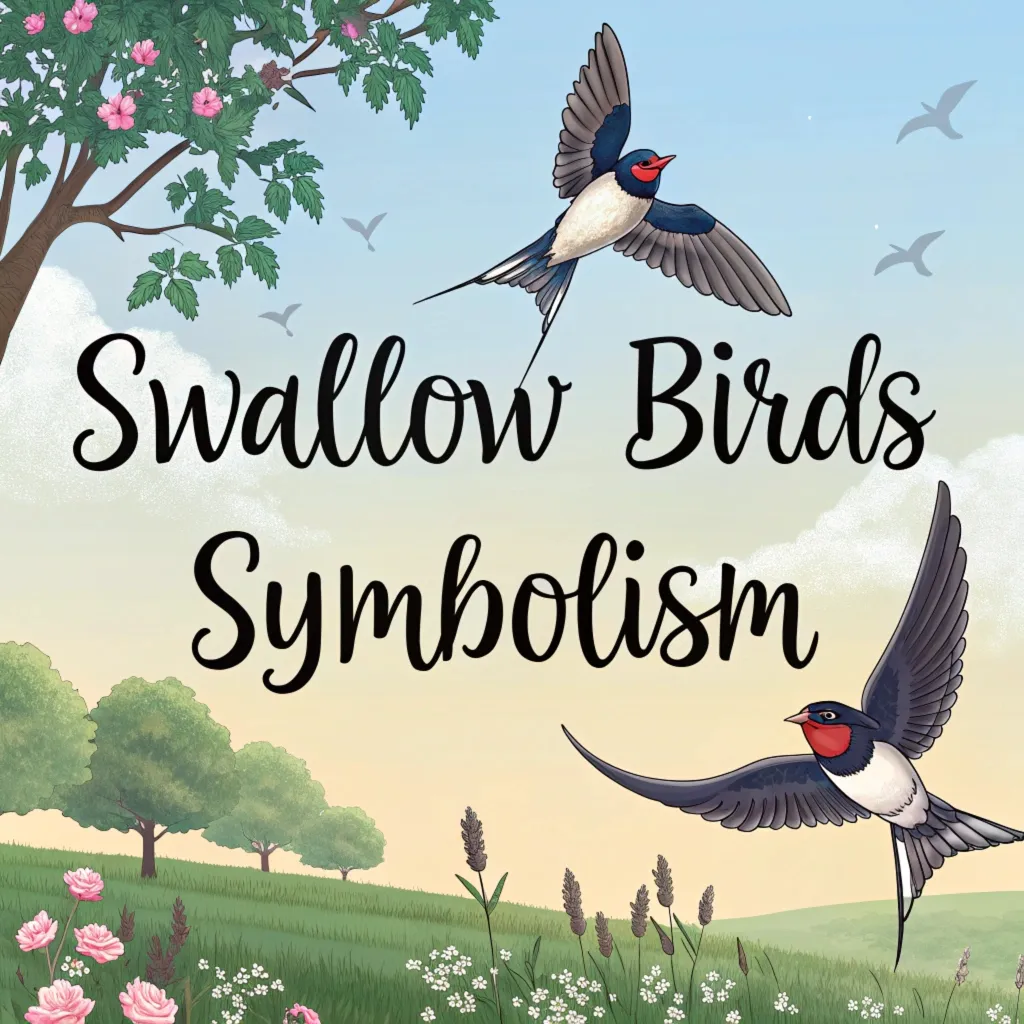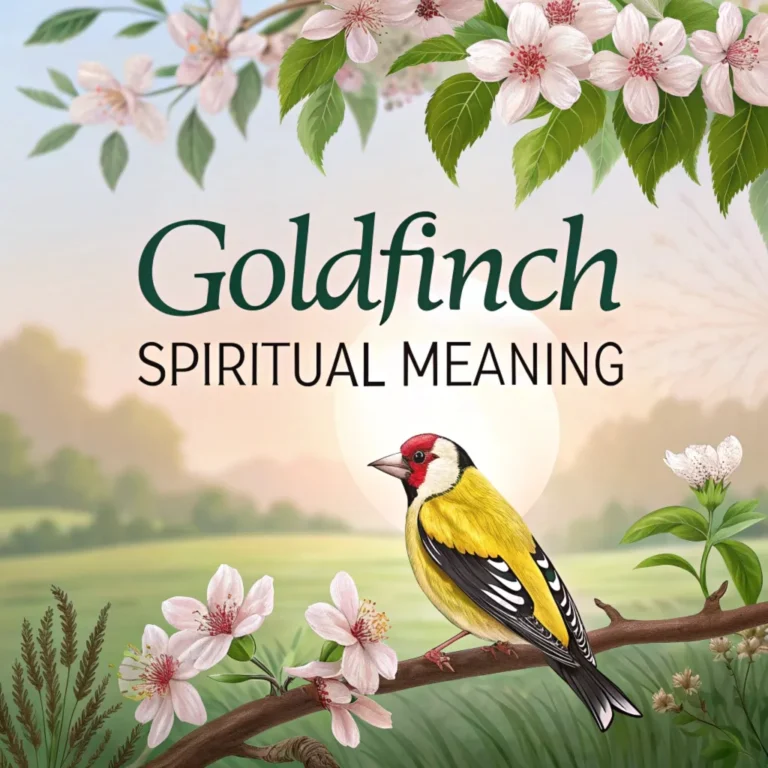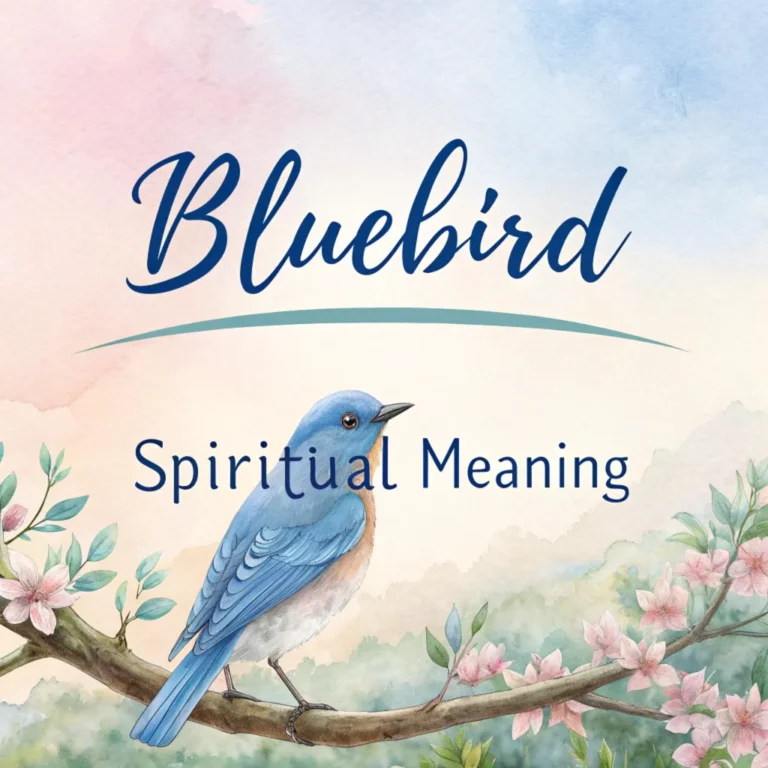Swallow Birds Symbolism: A Guide to Spiritual Meanings
Swallow birds have captivated human imagination for centuries. These graceful creatures, with their swift flight and loyal nature, embody deep symbolic meanings across cultures.
From ancient myths to modern tattoos, swallows represent hope, freedom, and love.
This exploration delves into the rich symbolism of swallows, uncovering their significance in various aspects of human life and culture.

Key Takeaways
- Swallows symbolize hope and renewal in many cultures, often associated with the arrival of spring and new beginnings.
- These birds represent freedom and safe passage, their migratory nature making them symbols of successful journeys.
- In mythology and folklore, swallows are seen as messengers of prosperity and fertility.
- Swallow tattoos hold special significance, particularly in maritime cultures, symbolizing experience, loyalty, and safe return.
- The presence of swallows has inspired conservation efforts, highlighting their importance in ecosystems.
- Across various traditions, swallows are linked to love, fidelity, and family bonds.
Introduction to Swallow Birds and Their Symbolism
Swallow birds have a unique place in human culture and imagination. These small, agile birds with their forked tails and graceful flight patterns have long been associated with various symbolic meanings.
Swallows are found in many parts of the world and their annual migrations have made them symbols of change and renewal.
The symbolism of swallows is deeply rooted in their natural behavior. Their return each spring has made them harbingers of warmer weather and new beginnings. This association with renewal has led to swallows becoming symbols of hope and positive change in many cultures.
Swallows’ ability to navigate vast distances during migration has also contributed to their symbolic significance.
Their remarkable homing instinct, allowing them to return to the same nesting sites year after year, has made them powerful symbols of loyalty and perseverance.
This natural behavior has inspired humans to associate swallows with the ideas of homecoming and constancy, further enriching their symbolic meaning across different societies.
Historical Significance of Swallows

The historical importance of swallows dates back thousands of years. In Ancient Greece, swallows were associated with Aphrodite, the goddess of love.
The Greeks believed that swallows were sacred birds and that harming them could bring misfortune.
Throughout history, swallows have been seen as good luck charms. Their presence near homes was often considered a blessing, with many cultures believing that swallows nesting on a house brought prosperity and protection to its inhabitants.
The historical significance of swallows extends beyond ancient civilizations. In medieval Europe, swallows were often associated with the Christian faith.
Their annual return coincided with the spring equinox, which often fell near Easter, leading to connections between swallows and resurrection symbolism.
This association further cemented the swallow’s place in cultural and religious narratives, enhancing its symbolic importance across different societies and time periods.
Swallows in Ancient Mythology
In various mythologies, swallows play significant roles. Chinese mythology links swallows to the start of spring and new beginnings. In some African legends, swallows are portrayed as messengers between the earth and the sky.
The Shang dynasty of China had a fascinating myth about their origins involving a swallow. According to this legend, their ancestor was born after a woman swallowed a swallow’s egg, linking the bird to ideas of fertility and divine origins.
Ancient Egyptian mythology also featured swallows prominently. These birds were associated with the goddess Isis, who was often depicted as a swallow or with swallow attributes.
This connection stemmed from the swallow’s ability to traverse great distances, much like Isis’s mythological journey to gather the pieces of her husband Osiris.
The swallow’s association with Isis further reinforced its symbolism of loyalty, protection, and rebirth in ancient Egyptian culture.
Swallow Symbolism in Different Cultures

Swallow symbolism varies across cultures but often carries themes of hope, loyalty, and freedom.
In Portuguese culture, swallows represent love and fidelity. Many Portuguese couples incorporate swallow imagery in their weddings as a symbol of their commitment.
In Japanese culture, swallows are associated with good fortune and are often depicted in art and literature. The swift return of swallows each year is seen as a sign of reliability and constancy in many Asian cultures.
In Native American cultures, particularly among some tribes of the Pacific Northwest, swallows hold a special place in folklore and symbolism. These cultures often view swallows as messengers of change and harbingers of good news.
The swallow’s agility in flight is admired and sometimes associated with quick thinking and adaptability.
In some Native American stories, swallows are credited with bringing fire or other important knowledge to humans, further emphasizing their role as beneficial creatures in these cultural narratives.
Swallows as Symbols of Hope and Renewal
One of the most prevalent symbolic meanings of swallows is hope and renewal. Their annual migration and return symbolize the cycle of life and the promise of new beginnings. In many cultures, the first sighting of a swallow in spring is celebrated as a sign of good things to come.
This symbolism of hope extends to various aspects of life. Swallows are often seen as messengers of change, bringing with them the promise of better days ahead. Their ability to navigate long distances and return home has made them symbols of resilience and perseverance.
The swallow’s role as a symbol of hope and renewal is particularly poignant in times of hardship. During periods of war or natural disasters, the return of swallows has often been seen as a sign of normalcy and recovery.
Their presence reminds people of the cyclical nature of life and the potential for positive change.
This aspect of swallow symbolism has made them powerful motifs in literature and art dealing with themes of overcoming adversity and finding hope in difficult times.
The Meaning of Swallow Tattoo Art
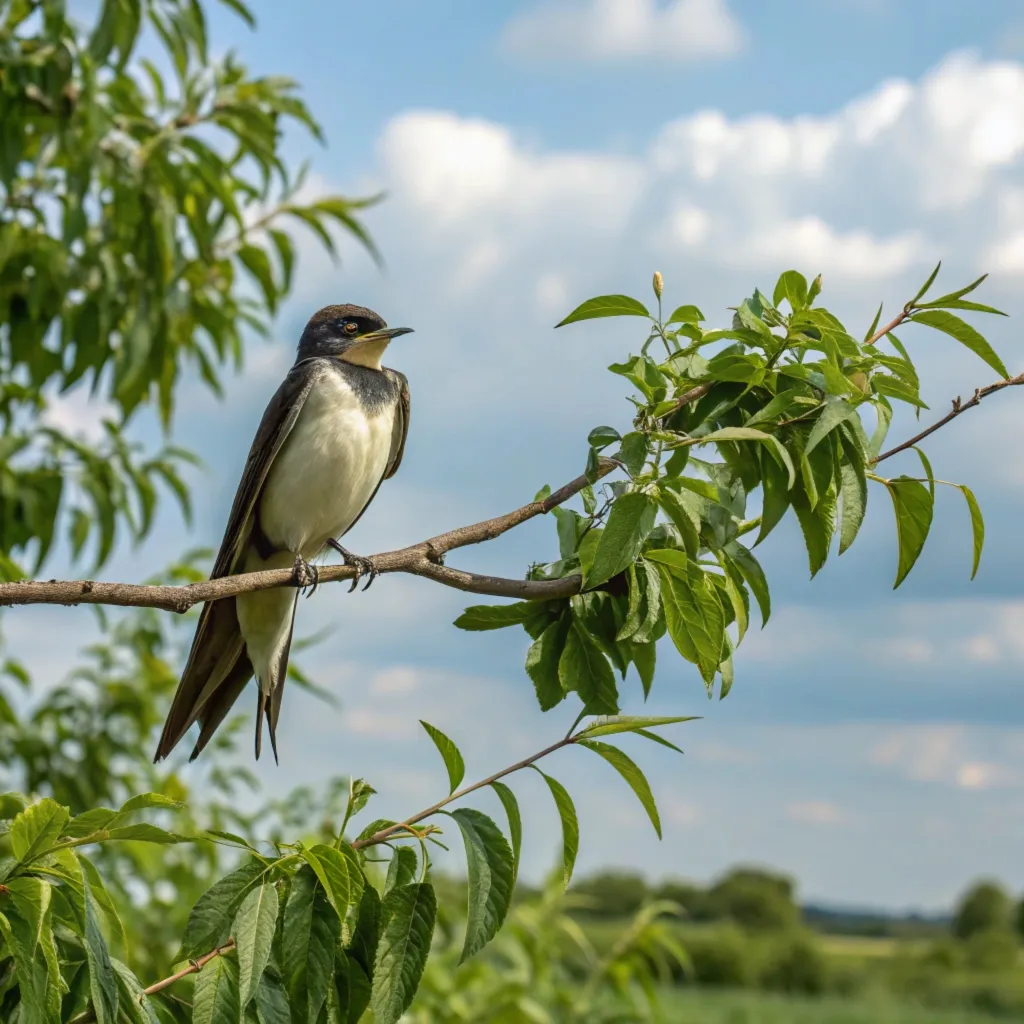
Swallow tattoos hold special significance, particularly in maritime cultures. Traditionally, sailors would get a swallow tattoo after sailing 5,000 nautical miles.
A second swallow would be added at 10,000 miles. These tattoos symbolized experience, loyalty, and the hope of returning home safely.
Beyond maritime traditions, swallow tattoos have come to represent freedom, loyalty, and love. The image of a swallow in flight is often chosen to symbolize a person’s desire for freedom or their loyalty to family and friends.
In modern tattoo culture, the meaning of swallow tattoos has evolved to include broader themes. Some people choose swallow tattoos to represent personal growth and transformation, mirroring the bird’s migratory journey.
Others use them to commemorate significant life events or as a symbol of overcoming obstacles. The versatility of swallow symbolism in tattoo art reflects its enduring appeal and the diverse ways people connect with these birds‘ symbolic meanings.
Swallows in Literature and Folklore
Swallows have featured prominently in literature and folklore across cultures. In many stories, they are portrayed as clever and helpful creatures. Their swift flight and annual migrations have inspired countless tales and poems.
In some folktales, swallows are depicted as messengers between the human world and the spirit realm. Their ability to traverse great distances has made them symbols of communication and connection in many literary works.
One of the most famous literary appearances of swallows is in Oscar Wilde’s “The Happy Prince”. In this tale, a swallow’s loyalty and sacrifice are central to the story, emphasizing the bird’s symbolic association with compassion and selflessness.
Similarly, in Hans Christian Andersen’s “Thumbelina”, a swallow plays crucial role in helping the protagonist, reinforcing the idea of swallows as helpful and kind creatures.
These literary depictions have further cemented the swallow’s place in cultural imagination as symbols of kindness and assistance.
Symbolic Representations of Swallows in Art
Artistic representations of swallows are found in various forms across cultures. In Chinese art, swallows often symbolize loyalty and family values.
Their graceful forms have inspired countless paintings, sculptures, and decorative arts.
In Western art, swallows frequently appear in pastoral scenes, symbolizing the arrival of spring. Their swift, darting flight has made them popular subjects in both traditional and modern art forms, often representing freedom and movement.
The Art Nouveau movement of the late 19th and early 20th centuries embraced swallow imagery, incorporating these birds into decorative designs for everything from jewelry to architecture.
Artists like René Lalique featured swallows prominently in their work, emphasizing the birds’ graceful lines and symbolic associations with beauty and freedom.
In Japanese art, particularly in ukiyo-e prints, swallows are often depicted in flight against scenic backgrounds, symbolizing the transient beauty of nature and the changing seasons.
Swallows in Modern Culture
In modern culture, swallows continue to hold symbolic significance. They are often used in branding and design to convey ideas of freedom, travel, and reliability.
The image of a swallow is frequently incorporated into logos for travel companies and outdoor brands.
Swallows also appear in popular music and film, often symbolizing themes of homecoming or the desire for freedom. Their enduring presence in modern culture demonstrates the lasting impact of their symbolism.
The influence of swallow symbolism extends into the digital age, where these birds have found new relevance in social media and online communication.
The swallow emoji is often used to represent freedom, travel, and positive change. In the world of fashion, swallow motifs continue to be popular in clothing and accessory designs, often symbolizing a free-spirited and adventurous lifestyle.
This modern interpretation of swallow symbolism shows how ancient symbols can evolve and find new meanings in contemporary contexts.
The Role of Swallows in Ecosystems
Beyond their symbolic significance, swallows play crucial roles in ecosystems. They are important insect predators, helping to control pest populations. Their presence or absence can be an indicator of environmental health.
The conservation of swallows has become an important issue in many parts of the world. Their reliance on specific habitats for nesting and feeding makes them vulnerable to environmental changes, highlighting the need for conservation efforts.
Swallows’ role in ecosystems extends to their impact on agriculture. As efficient insectivores, they naturally control populations of crop-damaging insects, making them valuable allies to farmers.
This ecological function has led to increased efforts to create swallow-friendly agricultural practices, such as maintaining old barns for nesting and reducing pesticide use.
The decline in swallow populations in some areas has raised concerns about the broader implications for ecosystem balance and biodiversity, emphasizing the interconnectedness of species in natural systems.
Why Swallows Are Seen as Good Luck Charms
The perception of swallows as good luck charms stems from various cultural beliefs. In many traditions, swallows nesting on a building are thought to bring good fortune to its inhabitants.
This belief likely originated from the swallow’s role in controlling insect populations, which would have been beneficial to farmers and homeowners.
The swallow’s ability to return to the same nesting site year after year has also contributed to its reputation as a symbol of loyalty and dependability. This consistency is often interpreted as a sign of stability and good fortune.
The association of swallows with good luck has led to various superstitions and practices across cultures.
In some European traditions, it’s considered extremely unlucky to harm a swallow or disturb its nest, reflecting a belief in the bird’s protective qualities.
Some sailors would tattoo swallow images on their hands or chest, believing this would ensure they wouldn’t drown at sea.
These beliefs highlight how the swallow’s perceived qualities of loyalty and safe return have been translated into tangible good luck symbols in different societies.
Swallows’ Symbolism in Maritime Cultures
In maritime cultures, swallows hold special significance. Sailors often saw swallows as a sign that land was near, making them symbols of hope and safe return. The sight of a swallow at sea was considered a good omen, promising a safe journey home.
The tradition of swallow tattoos among sailors reflects this maritime symbolism. Each swallow tattoo represented a significant milestone in a sailor’s career, serving as a badge of experience and a charm for safe travels.
The maritime symbolism of swallows extended beyond superstition to practical navigation. Sailors observed that swallows rarely ventured far from land, making their presence a reliable indicator of nearby shores.
This practical aspect reinforced the swallow’s symbolic importance in seafaring cultures. Additionally, the swallow’s ability to find its way home over vast distances resonated with sailors’ desires to return safely from long voyages.
This combination of practical utility and symbolic meaning made swallows particularly significant in maritime lore and tradition.
Swallows as Emblems of Love and Loyalty
Swallows are often seen as emblems of love and loyalty. This symbolism stems from their monogamous nature and their habit of returning to the same nesting site each year.
In many cultures, swallows are associated with fidelity and lasting relationships. The image of two swallows together is frequently used to represent devoted love.
This symbolism has made swallows popular motifs in wedding decorations and jewelry, representing the couple’s commitment to each other.
The symbolism of swallows in love and relationships has inspired various traditions and customs.
In some European cultures, it’s said that if a single person sees two swallows together on Valentine’s Day, they will find true love that year. This belief reflects the strong association between swallows and romantic partnerships.
The swallow’s loyalty to its mate and nesting site has also made it a popular symbol in family crests and coats of arms, representing familial devotion and continuity across generations.
Impacts of Swallow Symbolism on Conservation Efforts
The rich symbolism associated with swallows has had positive impacts on conservation efforts. The cultural significance of these birds has helped raise awareness about their importance and the need to protect their habitats.
Conservation initiatives often leverage the symbolic meaning of swallows to garner support. By highlighting the cultural and ecological importance of these birds, conservationists have been able to promote efforts to preserve swallow populations and their habitats.
The symbolic importance of swallows has led to innovative conservation approaches. In some areas, architects and urban planners are incorporating swallow-friendly designs into buildings, creating spaces for these birds to nest in urban environments.
Community-based conservation programs often use swallows as flagship species, capitalizing on their cultural significance to promote broader environmental awareness.
These efforts demonstrate how cultural symbolism can be a powerful tool in motivating conservation action and fostering a sense of stewardship for wildlife and habitats.
FAQs
What does a swallow tattoo symbolize?
A swallow tattoo typically symbolizes freedom, loyalty, and safe return. For sailors, it represents nautical experience and the hope of coming home safely.
Are swallows considered good luck?
Yes, in many cultures, swallows are considered harbingers of good luck. Their presence is often associated with prosperity and protection.
What is the biblical meaning of swallows?
In the Bible, swallows are referred to as “birds of freedom” and are associated with God’s care for His creation.
Why are swallows associated with sailors?
Swallows are associated with sailors because they were often the first sign of land for those at sea, symbolizing hope and safe return.
What do swallows represent in Chinese culture?
In Chinese culture, swallows symbolize loyalty, family values, and the arrival of spring.
How have swallows influenced art and literature?
Swallows have been featured in art and literature as symbols of freedom, hope, and renewal, inspiring countless works across various cultures.

Joyce is the passionate founder of Chirping Hearts, a website dedicated to sharing her love for birds and providing valuable information about avian life. With a background in ornithology and years of experience in birdwatching, Joyce aims to inspire others to appreciate the beauty and diversity of birds. Through her engaging articles and guides, she hopes to foster a community of bird enthusiasts who share her enthusiasm for these incredible creatures. When she’s not writing, Joyce enjoys exploring nature trails and observing birds in their natural habitats.
